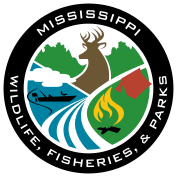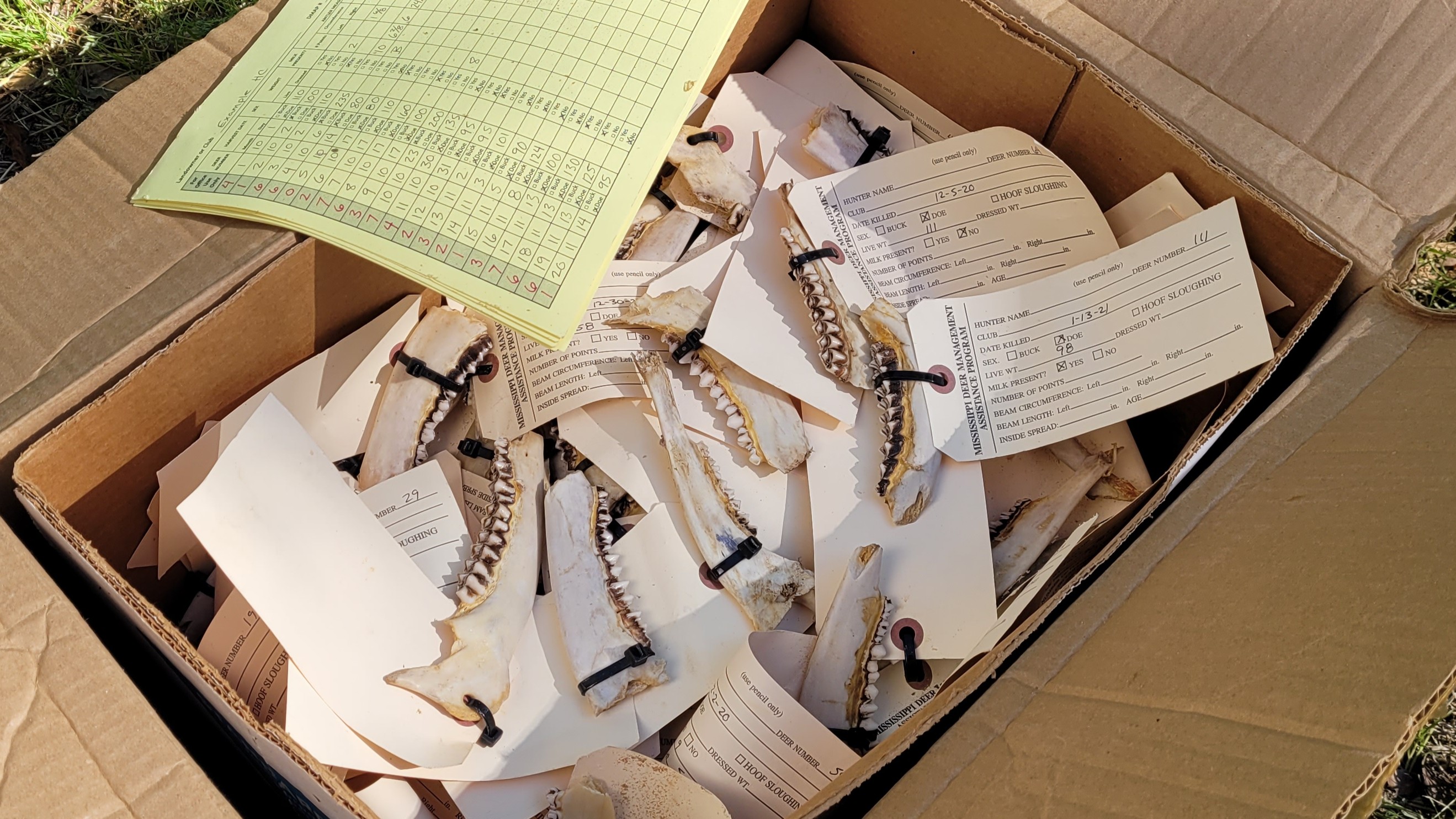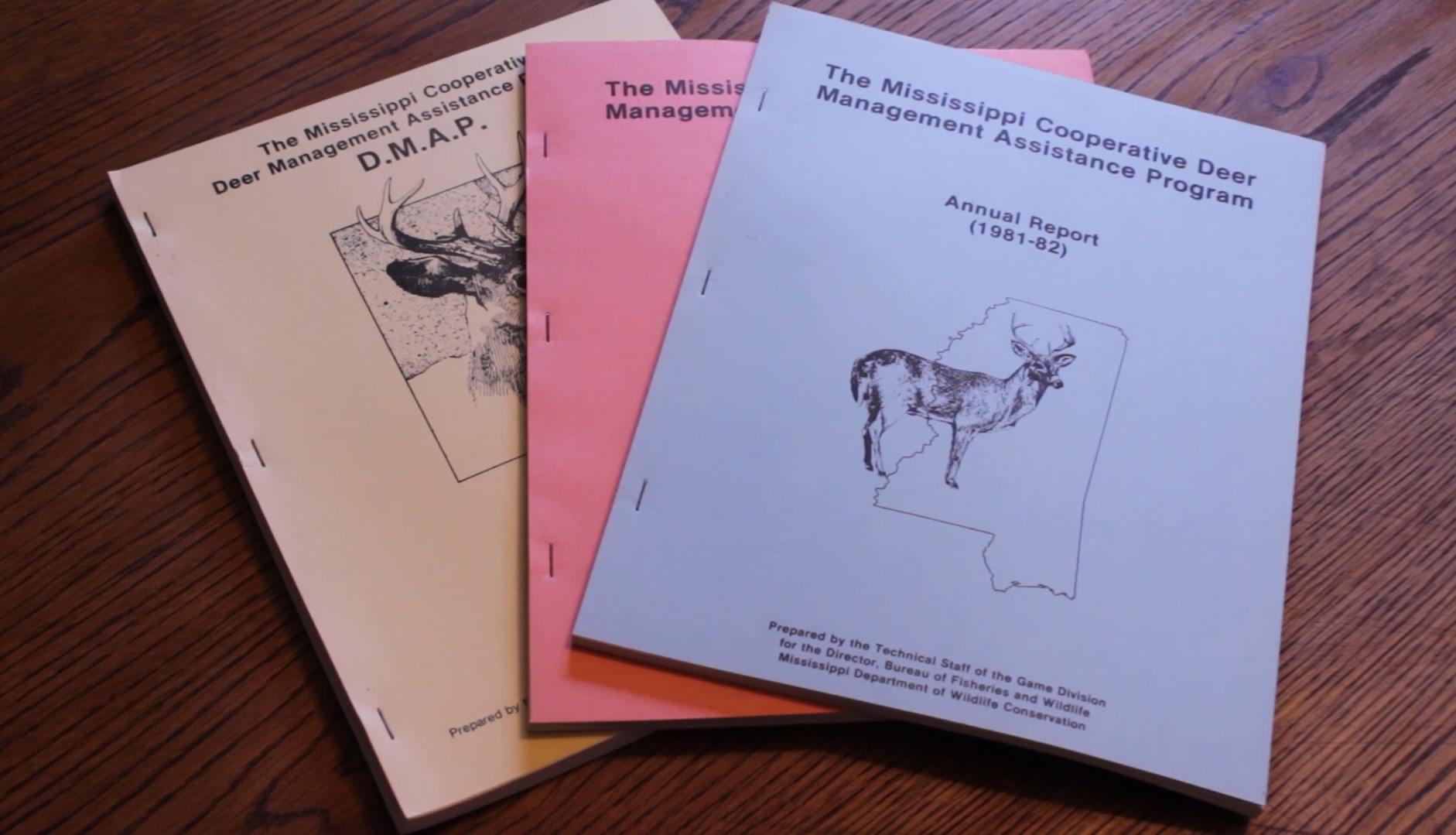
Written by: Pierce Young
MDWFP's Deer Management Assistance Program (DMAP), as the country's first deer management assistance program, has been one of the most successful ventures affecting deer management in Mississippi. The DMAP's widespread success has been credited to program design that directly involves the sportsman in the collection of harvest data and ultimately in the management of the deer herd.

The concept of DAMP was started as a deer research project by Mississippi State University, in cooperation with the Mississippi Department of Wildlife Conservation (now MDWFP), in Kemper and Noxubee counties in the 1977-1978 season.
DMAP became available as a statewide program in starting in 1980, when adopted by Mississippi’s state wildlife agency. As the state’s deer population grew, and the quality deer management philosophy became more popular, total DMAP membership in Mississippi also grew, until peaking in the mid-1990s at close to 1,200 cooperators on 2.8 million acres.
During the late-1980s and into the early-1990s, aggressive antlerless harvest was only available if a property was enrolled in DMAP, due to limited statewide doe harvest regulations. This changed in the mid-1990s.

By 1995, antlerless bag limits increased, hunters were allowed harvest does with firearms, and there were no longer any other requirements placed on landowners or hunting clubs to harvest antlerless deer during these periods. As a result, fewer properties needed to enroll in DMAP just to get management doe tags.
Today, DMAP functions as it was intended. The cooperators who remain on DMAP are, as a rule, genuinely interested in deer management, and those that still need management doe tags, or management buck tags, can receive them. Currently, biologists are able to devote the necessary time to provide quality management information to DMAP cooperators. Additional innovations in the DMAP data system continue to evolve as more types of data, such as observation data and camera survey results, can be included in the data management system to provide a more comprehensive analysis of a properties deer herd.
Recently, a DMAP deer data deep dive was conducted looking at almost 50 years worth of deer harvest data.
The dataset included 2,395 properties and 692,076 deer.
Here are some of the results:
On average...
Within 5 years,
✅️ Doe harvest increased (Avg. = +44%)
✅️ Lactation increased (Avg. = +8%)
✅️ Buck harvest increased (Avg. = +26%)
Within 10 years,
✅️ Buck age increased (Avg. = +40%)
✅️ Antler Score Potential increased (Avg. = +13%)
As doe body weights increased, antler score potential increased
✅️ For every +10 lbs in 1.5 yr old doe body weight = +7 inches in buck antler score potential
▶️ On the low-end: if the average 1.5 year old doe body weight = 80 lbs, then the average antler score potential for mature bucks was 100-105 B&C inches
▶️ On the high-end: if the average 1.5 year old doe body weight = 120 lbs, then the average antler score potential for mature bucks was 130-135 B&C inches
As average doe body weight and average buck antler score potential increases, the frequency of higher-end quality bucks are produced:
▶️ Average frequency of 170+ inch potential bucks = 0.4%
▶️ If 1.5 yr doe body weights average 80 lbs = frequency of 170+ inch potential bucks = 0.04%
✅️ If 1.5 yr doe body weights average 120 lbs = frequency of 170+ inch potential bucks = 2.6% (64x higher frequency)
✅️ After 10 years in DMAP the 170+ inch potential average = doubled
✅️ After 20 years in DMAP the 170+ inch potential average = tripled
When comparing properties that met greater than >90% of the biologist's recommendations, vs all other properties:
✅️ Buck age was greater (Avg. = +50%)
✅️ Beam lengths were longer (Avg. = +14%)
✅️ Antler score was greater (Avg. = +20%)
✅️ Score potential was higher (Avg. = + 7%)
✅️ Potential 170+ was greater (Avg. = +43%)
✅️ Doe harvest was greater (Avg. = +210%)
✅️ Year old doe body weights were higher (Avg. = +10%)
✅️ Adult doe lactation was higher (Avg. = + 15%)
In summary, DMAP works. Using deer harvest data to inform deer management decisions works.
For more information about signing up for DMAP and request a site visit go to –